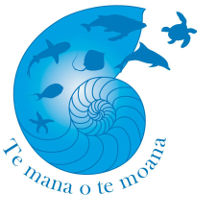Protect Marine Life
The sea, a rich but fragile ecosystem
The importance of coral reefs
Coral reefs are at the base of the Polynesian marine ecosystem and host a rich and diverse fauna and flora. Fragile as they are very sensitive to the quality of water, reefs are built by colonies of minuscule animals, the coral. To continue to preserve the quality of Polynesian waters and the health of coral reefs, Please respect a few good reflexes.
Good practices
Mooring: When available, use mooring buoys, because anchoring can cause coral damage and spread invasive species. Use the available mooring areas.
Public maritime domain: Using the public maritime domain; do not enter private properties to access them. Respect local prohibitions (motu and coasts).
Waste management: Dumping waste in the lagoons is strictly prohibited (possible fines). Your waste must be sorted and disposed of in waste bins on land.
Snorkeling: Do not step on or collect coral. Do not hit the bottom fauna with your fins.
Protect and regulated species
Sharks, marine mammals, sea turtles, manta rays, shells (troca, burgau, conch, giant mussel, helmet, triton) and black coral are protected all year round. Capturing, possessing and eating these species is prohibited under penalty of fine or boat seizure.
Some species of marine animals are protected according to the area or the season (like lobsters) or are subjectesd to a minimum size when captured (like the “benitier” clam). Get information at each island, before catching anything.
Emblematic species
Sharks
Some twenty species of sharks have been identified in the archipelagos. Black tips, gray or lemon sharks are common. Some passes in the Tuamotu or bays in the Marquesas attract remarkable shark concentrations at the world scale.
Turtles
5 species of sea turtles live in Polynesian waters. The green turtle and the «imbriquée» turtles can be seen in the lagoons or behind the reef. Green turtles regularly lay their eggs in Polynesia.
Cetaceans
16 species come regularly to Polynesia. The bottlenose dolphin, is often seen in bays and passes. Humpback whales are the most common. They are normally present from July to December when they reproduce. In French Polynesia, these species are followed by scientists and often observed by the public.
In case you encounter with one of these animals, do not hesitate to also participate by visiting the following links:
www.observatoirepolynesie.org
www.requinsdepolynesie.com
Cetaceans watching
- Do not go straight toward a group of cetaceans, but approach it at an angle of about 30° relative to its direction.
- Do not exceed a speed of 3 knots within a 300 m radius.
- Do not encircle them or separate members from their group.Keep your course and speed steady. Avoid all changes in direction and motor speed.
- All boats must stay on the same side of the group.
- Do not surprise them or trap them between a reef and your boat.
- If an animal comes close, put your engine in neutral. Do not stop it in order to remain maneuverable, while being recognizable by the animal.
Safety recommendations
Very few marine species are dangerous in Polynesia.
Use caution when walking in the water. While diving or snorkeling do not touch fire coral. Any sting by a stonefish, resting at the bottom, must be taken care of immediately in an emergency medical facility.
Ciguatera (or “gratte”) is present in French Polynesia. Do not eat species known to be poisonous and/or whose sale is prohibited.



